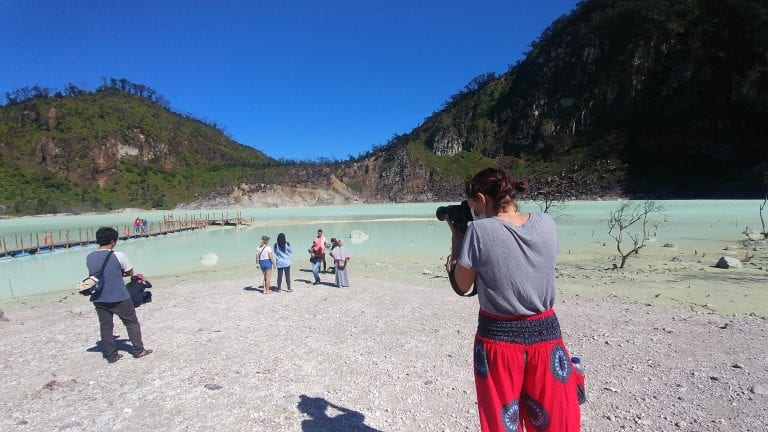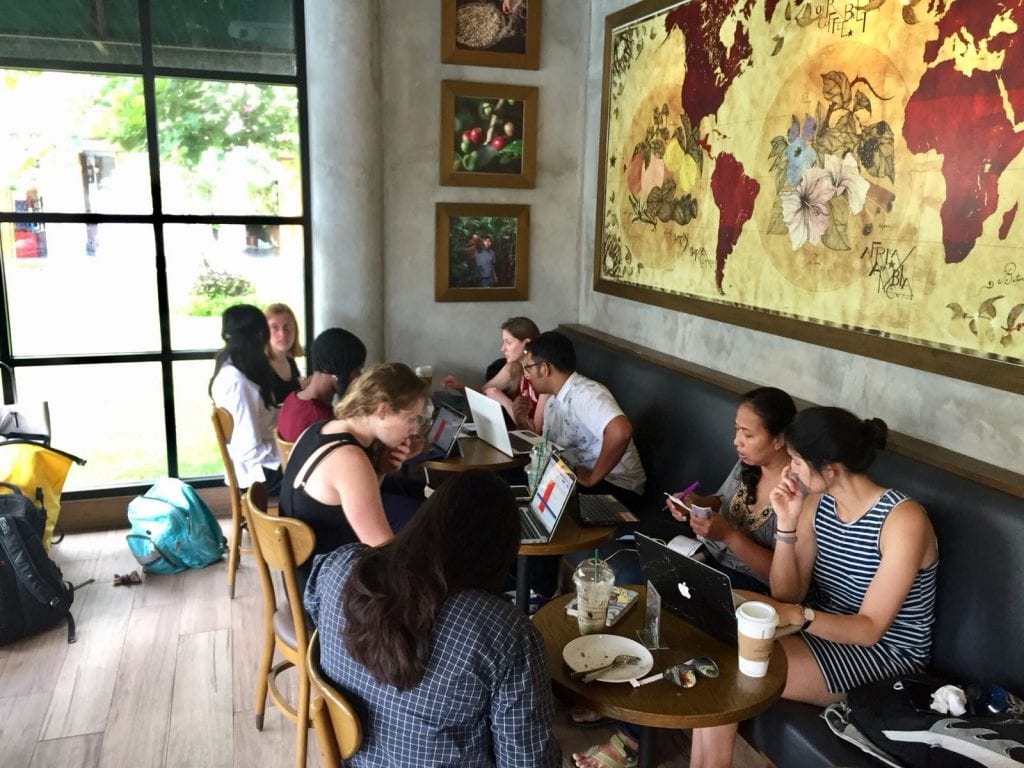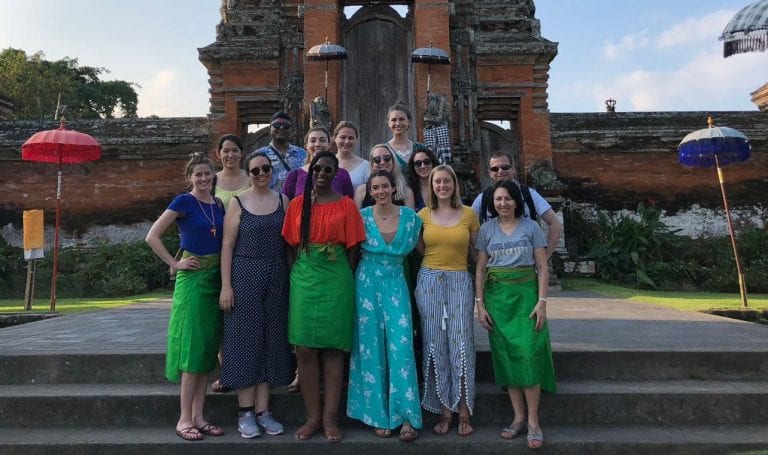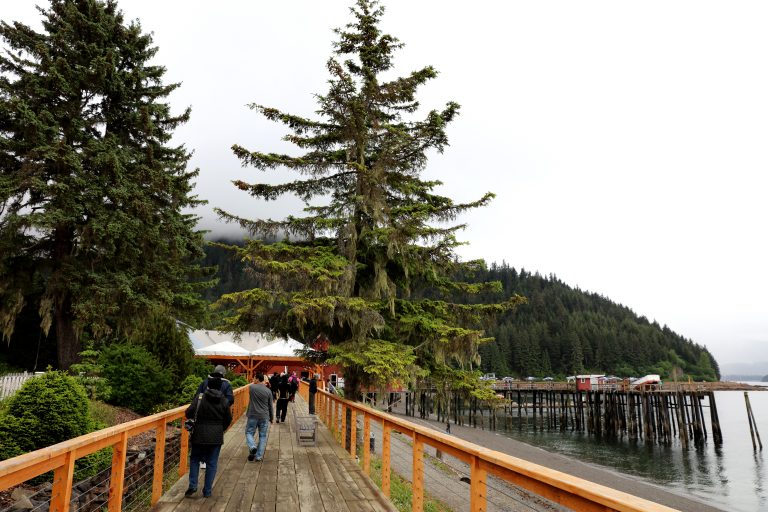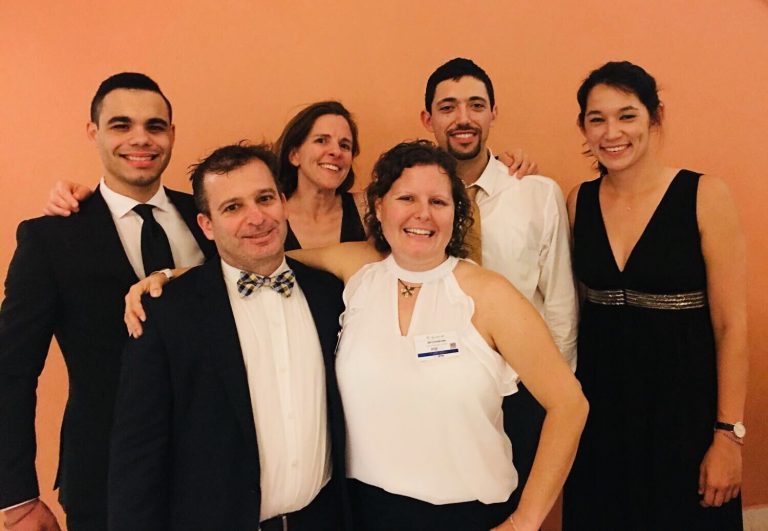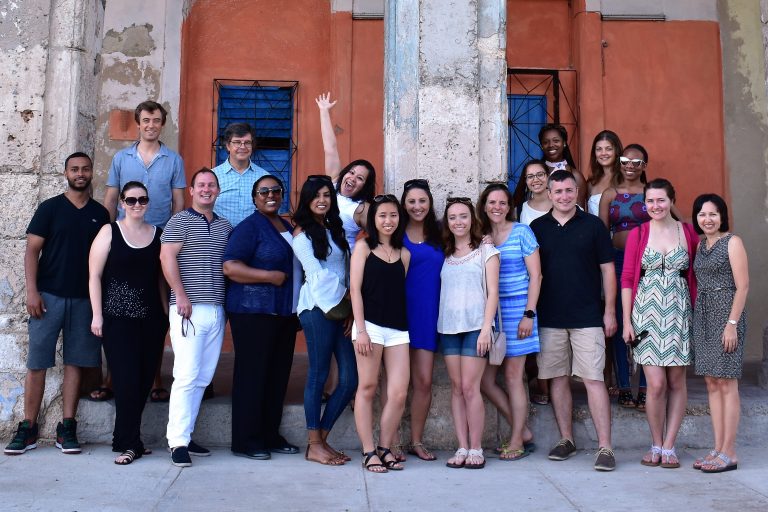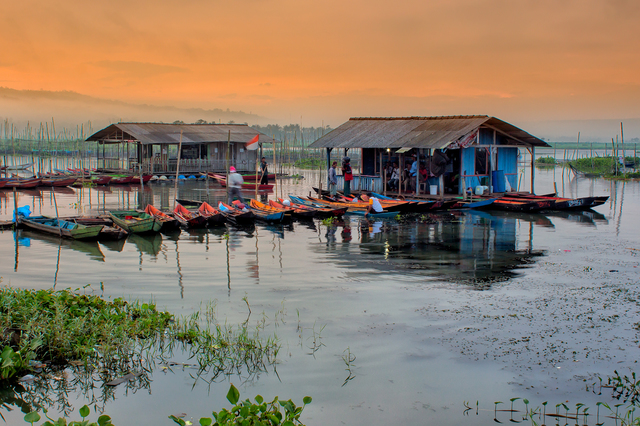
Category: Uncategorized
PUTTING CLASSROOM LESSONS INTO PRACTICE IN INDONESIA: STUDENTS CONSULT IN POPULAR TOURISM DESTINATIONS OF BALI AND BANDUNG
Bali’s palm-fringed Kuta beach, a former fishing village, has become one of Indonesia’s major tourist destinations. Last year, one in three of the country’s 13.7 million overseas tourists went to Bali.
While the influx of visitors has been a boon for the local economy, tourism is taking its toll on the local environment. Kuta beach is now drowning in a sea of plastic garbage, which is so overwhelming that earlier this year, local officials declared a “garbage emergency” across a 3.7-mile (6-km) stretch of coast. While much of the waste washes in from the sea, it’s also generated by tourists and residents. Bali’s infrastructure is just not equipped to handle so many people.
Trash disposal is only one challenge posed by overtourism, the recently coined term for too many visitors, which has become a rampant problem that’s plaguing popular destinations around the world. To help them deal with with their particular tourism challenges, George Washington University students and faculty working under the auspices of the International Institute of Tourism Studies recently went to Bali and Bandung—the capital of West Java— to conduct assessments and make recommendations for future development. The consulting project took place at the invitation of and in collaboration with student counterparts from STP Bali and STP Bandung, local universities whose Colleges of Tourism falls under the auspices of the Ministry of Tourism.
“While tourism brings many economic benefits to the island, it’s also creating pressure on local resources and contributing to major environmental problems such as pollution, water depletion, and waste and water management issues,” explains Taylor Ruoff who was among the group of GWU student consultants.
The team of twelve, which included students from the Masters of Tourism Administration program along with one student who is earning her Masters in International Education, used the Global Sustainable Tourism Council (GSTC) Criteria for Destinations as the basis for their assessment in Bali. These criteria are designed to help tourism destinations and businesses protect and maintain natural and cultural resources, maximizing social and economic benefits for host communities and the environment.
The students made a preliminary presentation of their findings and recommendations in Bali at the 2018 Forum for International Tourism & the Environment (FITE), an annual forum that draws students from Indonesia and around the world to participate in yearly competitions and international conferences on tourism and sustainability. They commended the many businesses on the island that had joined the voluntary certification program Tri Hita Karana, which requires that members uphold specific certification practices, and they also cited a couple of temples in particular that were at risk due to overcrowding.
For their work in Bandung—a large city on the island of Java that mostly draws domestic tourists for its commercial, cultural and culinary attractions—the GWU students worked with graduate students from STP Bandung. Together, they assessed the tourism situation in the outlying villages of Jelekong and Alamendah and offered recommendations for improving community-based offerings for tourists, including homestays with local families.
The students presented their findings to community members and government officials from the two villages. “We’d learned in destination management classes about the benefits of bringing together diverse groups of tourism stakeholders with competing opinions and priorities,” explains Ruoff. “Seeing the discussions unfold in-person was eye-opening. You have government officials looking to bring more people and revenue into the town. You also have locals, whose families have always lived in the villages and they don’t necessarily see the benefits of tourism. It’s difficult to make everyone happy. We tried our best to reflect the interests of all stakeholders in our presentation and final report.”
To discuss solutions to various challenges that Indonesia’s tourism industry faces, Anang Sutono, Senior Advisor to the country’s Ministry of Tourism, will be speaking at the World Tourism Day Forum Overtourism: Seeking Solutions. The event, a joint initiative of GW’s International Institute of Tourism Studies and the Center for Responsible Travel, will take place in the Jack Morton auditorium on September 27th. Click here to learn more.
The Politics of Tourism: GW’s Spring Colloquium Draws U.S. Senator Brian Schatz and Other Government and Industry Leaders
“People are increasingly looking for culturally authentic experiences. The only way you get that is if people know who they are and what their story is—and then have the power to tell it,” noted Senator Brian Schatz (D-HI) in his keynote address at the George Washington University’s annual Spring Colloquium on April 17th.
Senator Schatz, who is passionate about the subject of cultural heritage tourism and the politics surrounding it, received an enthusiastic reception from the GW crowd, which included about 100 students, tourism industry professionals and academics.
The event, entitled the Politics of Tourism, was organized by the GW Tourism Alumni Association and Travel Massive. Panelists including Ed Hall III, Tourism Coordinator, Bureau of Indian Affairs; Erik Hansen, Vice President, Government Relations, US Travel Association; Carla Campos, Acting Executive Director of the Puerto Rico Tourism Company; and Gloria Bohan, CEO of Omega World Travel discussed how local, regional and national politics affect the tourism industry, which many see as frequently sidelined.
Senator Schatz didn’t pull any punches in his assessment of current Washington politics noting that, “This administration has not invested in tourism the way it should—not in word, and not in deed. The border wall insulted our neighbors, the Muslim ban insulted a world religion with nearly two billion followers, and the president’s vulgar comments about Africa offended an entire continent. Meanwhile, Trump has tried to cut budgets and programs at key federal agencies that are important to tourism. All this has done a lot of damage.”
Two months ago Senator Schatz introduced the Explore America Act, a bill designed to promote the interests of native Hawaiians in his own state and native people around the country. As Schatz describes it, “The bill is about returning control to the people who live in the places everyone else wants to visit.”
Senator Schatz’s approach is very much aligned with the focus of GW’s Master of Tourism Administration program and the University’s International Institute of Tourism Studies, both of which emphasize the importance of sustainability and community self-determination in tourism good planning. Students learn practical methods for bringing together stakeholders with divergent interests to establish a common vision for a tourism sector that balances the needs of local communities with business interests. The goal is to provide visitors with authentic experiences that contribute to the protection of natural and cultural resources.
GW alumna Carla Campos drew on those lessons in Puerto Rico, where she is widely credited with catalyzing the tourism recovery efforts following Hurricanes Irma and Maria. Campos’ intrepid leadership throughout the crisis earned her this year’s Tourism Innovation Award. Established two years ago to recognize the contributions of Dr. Don Hawkins, Professor Emeritus of Management and Tourism Studies at GW, the award is given to individuals who demonstrate extraordinary leadership in the tourism industry.
In introducing the award at the colloquium International Institute of Tourism Studies Executive Director Seleni Matus remarked, “Six months ago, when I first saw the footage of hurricane ravaged Puerto Rico and read stories of families without food, water, electricity, I reacted the way that I’m sure we all did: with grief and despair. I should have known better. I should have known that amidst the chaos and political infighting, a GW alum would assume the helm of the tourism recovery and with as much gusto as Irma and then Maria visited on the island, lead efforts to reopen the tourist destination for business—amazingly enough, after only three months.”
Today—thanks in large part to Campos’ efforts— most of Puerto Rico’s major hotels are fully operational and the cruise ship season is set to break records. Restaurants and bars are packed. And the streets of Old San Juan are teaming with visitors.
The successful Politics in Tourism colloquium is evidence of GW’s pivotal role as a thought leader in sustainable tourism development—a role that has only become increasingly important since the launch of the UN’s Sustainable Development Goals. These goals emphasize how tourism can lead to job creation, poverty reduction and economic growth. So while the tourism sector may not—as Senator Schatz says—“get enough love at the federal level,” its influence is gaining recognition on the global stage. With the continued leadership of the colloquium’s organizers from the GW Tourism Alumni Network—including Daniel Dozier, Guergana Stoytcheva, Avery Jones and Talia Salem—presenters and attendees, the potential and promise of sustainable tourism becomes increasingly within reach.
Cultural Heritage Tourism Serves the Needs of Both Indigenous Communities & Travellers Seeking Authenticity
Alaska’s Icy Strait Point offers tourists unparalleled access to adventure, wilderness and wildlife. But what really sets this Native Alaskan-owned business apart is the opportunity it affords visitors to experience the tribe’s cultural and culinary traditions—a window into contemporary Tlingit life.
Located about 35 miles west of Juneau, Icy Strait was once the Hoonah Packing Company, a salmon cannery, which in 1996 was converted into a museum, restaurant and shops that today provide Huna Tlingit tribal members with economic opportunities including employment, preference for local hire and entrepreneurship options. Icy Strait Point has been so successful that it’s received a Travel & Leisure Global Vision Award for Community Building, a Conde Nast Traveler World Savers Award and a Best Tribal Destinations and Tourism Leaders Award from the American Indian Alaska Native Tourism Association (AIANTA).
This cultural heritage tourism success story is a prime example of how tourism can drive economic development while offering visitors an authentic experience, which is why Icy Strait Point is featured in the George Washington University’s (GW) certificate program in cultural heritage tourism curriculum. For the past year, GW’s International Institute of Tourism Studies (IITS) in partnership with AIANTA has been offering the six-week professional development program to individuals working with tribal tourism in some capacity. In November, 2017 48 people from tribal governments and businesses completed the program and received their professional certificates.
“Cultural heritage tourism provides indigenous communities with a way to increase their livelihoods while preserving their native traditions,” explains IITS Executive Director Seleni Matus. “At the same time, we’re seeing an increase in the number of tourists who value a travel experience that is authentic and puts them into close contact with people from other cultural backgrounds. In other words, cultural heritage tourism provides wonderful alternatives for both visitors and host communities. It’s a win-win.”
AIANTA’s Executive Director Camille Ferguson notes that, “Providing educational opportunities like the cultural heritage tourism certificate program helps tribes and communities to establish themselves as tribal tourism leaders.”
The program draws members of tribes from around the country. For example, the State of Montana has enrolled six participants. According to Philip Belangie, Program Manager from Montana’s Office of Tourism and Business Development, “that’s because the underlying foundation to our investment in cultural heritage tourism is the knowledge that the greatest asset tribes have is their culture.”
The joint GW International Institute of Tourism Studies and American Indian Native Alaska Tourism Association’s six-week Professional Certificate in Cultural Heritage Tourism program is designed to help participants:
- Develop an understanding of trends in cultural heritage and native tourism;
- Learn best options and approaches for managing tourism at the community level;
- An understanding of how to conduct a comprehensive tourism assessment and evaluate the potential of cultural heritage tourism for your community;
- The tools needed to introduce cultural heritage tourism to your community and to plan for its adoption and growth.
Please click here for more information and to register for the program.
GW and G Adventures Publish Guidelines on Cultural Heritage Tourism
Indigenous People and The Travel Industry: Global Good Practice Guidelines is a 23-page, open-source booklet for travel businesses working with indigenous communities. Its 17 guidelines, developed after thorough review of existing literature and primary surveys with communities and travelers, were finalized with input from an expert panel including the World Indigenous Tourism Alliance, Indigenous Tourism Association of Canada, U.S. Bureau of Indian Affairs, American Indian Alaska Native Tourism Association, Community Based Tourism Institute, and Sustainable Travel & Tourism Agenda. Click here to access the guide.
Photo by Enrico Blasutto (Own work) [CC BY-SA 4.0 (https://creativecommons.org/licenses/by-sa/4.0)], via Wikimedia Commons
GW Students Attend Major Sustainable Tourism Conference in Kingston, Jamaica and Weigh in on Challenges & Opportunities Facing the Industry
By designating 2017 the Year of Sustainable Tourism for Development, the United Nations confirmed that tourism must be a driver of economic growth and environmental conservation. "This is a unique opportunity to build a more responsible and committed tourism sector that can capitalize its immense potential in terms of economic prosperity, social inclusion, peace and understanding, cultural and environmental preservation,” said former UNWTO Secretary-General Taleb Rifai in establishing the year.
A number of events throughout 2017 served to raise awareness of tourism’s many challenges and opportunities. The complex industry—an amalgam of transportation services, including airlines, cruise ships and taxis; hotels and resorts; restaurants and catering; and entertainment venues, from casinos to concert halls to national parks—has vast reach and touches an enormous number of sectors including food, fuel and manufacturing.
Among the year’s key events was the Conference on Jobs and Inclusive Growth: Partnerships for Sustainable Tourism held in November in Montego Bay, Jamaica. Organized by The World Tourism Organization, the Government of Jamaica, the World Bank Group, the Inter-American Development Bank and The George Washington University, the conference was a who’s who in the tourism industry, drawing 1,500 participants including six GW Masters of Tourism Administration students.
Students attended sessions designed to pave the way forward toward inclusive economic and social development through tourism. In general, they were impressed, as they said, “by the excellent panel topics, animated discussions and expertise of the presenters.” In addition to the breadth of subjects covered, Elizabeth Jordan was particularly struck by the “handful of presentations that focused on tangible issues such as the rise of the Chinese middle class and its resulting impact on the travel industry.”
The greatest challenges facing the tourism industry today, according to the GW attendees:
“Providing greater access to financing for small and medium enterprises and integrating measures that address climate change,”
—Marty SIlber
“Climate change is certainly going to impact the tourism industry and in many places already has.”
—Diana Kelterborn
“I think the industry's incredible growth may also be its greatest challenge, especially in terms of over-tourism and its strain on cultural and environmental resources. Tourism and the exploitation of children as well as the working poor are cause for concern. Lastly, climate change poses a significant long-term risk to the industry, one that must be taken seriously in terms of destination management.”
—Matthew Ozuna
“Incorporating the local supply chain for food, materials, human resources, etc. to encourage economic development in developing communities.”
—Jill Christmas
"To remain relevant and competitive, tourism destinations and businesses must respond effectively to today's travelers, who are increasingly informed, connected and demanding."
—Elizabeth Jordan
The greatest opportunities for growth in the sustainable tourism industry, according to the GW group:
“Data analytics and applying the information to strengthening tourism products and services.”
—Marty Silber
“Rapidly advancing technology is reinventing business models and making sustainable travel more affordable and accessible for both consumers and tourism businesses.”
—Diana Kelterborn
“Opportunities for jobs and inclusive economic growth, community and eco-tourism. I think the Buy Local movement helps sustainable tourism tremendously as do carbon offset programs.”
—Matthew Ozuna
“Travel is about the experience, not just the location anymore. If providers can change the way they think to create experiences, the growth potential is significant.”
—Jill Christmas
“The tourism sector will find growth and value in moving away from paid media advertising and investing in earned media. Sustainable development is going to require the balance of both the private and public sectors. And policy needs to ensure that tourism supports local communities.”
—Jonathan Mendez
"Tourism businesses have an opportunity to become sustainability leaders, ensuring that all of their decisions contribute to economic growth in destination communities, limit waste and reduce the greenhouse gasses that contribute to climate change."
—Elizabeth Jordan
GW Students Spend Two Weeks In Havana Consulting on Home Stays and Restaurants
Elizabeth Jordan, now in her second year of the Master of Tourism Administration program, was one of 17 students to participate in an international tourism consulting practicum—or hands-on course—in Cuba this past summer. ...continue reading "GW Students Spend Two Weeks In Havana Consulting on Home Stays and Restaurants"
Tourism & Debate Students Travel to Indonesia: Competition Awards Ceremony Provides New Appreciation for Innovative Approaches to Sustainable Tourism
Visitors to Rawa Pening, a lake in Central Java, Indonesia, describe their experience as “peaceful”, “calm” and “joyful.” But the tourist destination is threatened by an influx of invasive plants, which scientists warn may cause the lake’s waters to dry up within a few years. So Inasa Ori Sativa, a student from the from Bandung Institute of Tourism, came up with the innovative idea of using water hyacinths as a craft material for local artisans. Her proposal, submitted to the 2017 Forum on International Tourism and Environment (FITE) Business Solutions competition won first place among more than one hundred entries.
For the competition—sponsored by the George Washington University International Institute for Tourism Studies, the GW Debate and Literary Society, the Bandung Institute of Tourism, the Embassy of France to Indonesia and the Indonesian Ministry of Tourism—students were invited to submit proposals for business ideas in support of sustainable tourism. In addition to the students in Indonesia, George Washington University students also applied to the competition. Debate and Literary Society organizers Bailey Fischer-Columbo and Jeffery Lear along with GW competition winners Stephanie Westhelle and Sarah Marin, received all-expense-paid trips to attend the award ceremony in West Java, where they helped to prepare the Indonesian students for the event by coaching them on presentation and English language skills.
The GW students were joined by Director of Debate Paul Hayes and International Institute of Tourism Studies Executive Director Seleni Matus, who in her presentation underscored the importance of this particular year, which has been designated by the UN as the International Year of Sustainable Tourism for Development. She remarked: “When carefully managed, tourism has the transformative power to be a force for good—it can enrich lives, strengthen communities and help protect resources and hertiage.”
For the students, the opportunity to work with counterparts in Indonesia and witness first-hand their commitment to sustainability, was truly life-changing. As Westhelle observed, “In America, too often we take our education for granted. But it’s clear that the Indonesian students I met value the opportunities their universities provide in terms of shaping their careers. They were so proactive. Also, sustainability is well-integrated into the culture. The competition submissions were truly inspiring.”
This was the competition’s second year. According to Paul Hayes, the YouTube video submissions from last year where students proposed their ideas for sustainability now have more than 60,000 views. For more information, please visit the FITE website.
Preserving Culture through Tourism in Indian Country
For Natasha Gourd, tourism provides a way to preserve and share her tribe’s cultural traditions, so that today’s visitors and future generations—“the children we cannot yet see"—can better appreciate and understand her people’s way of life. In July, IITS researchers met Gourd on a tour of North Dakota Indian Country, where five tribal nations are working to develop their tourism offerings. The five nations— including the Sisseton Wahpeton, Standing Rock, Mandan-Hidatsa-Arikara, Turtle Mountain Band of Chippewa and Spirit Lake —have recently formed the North Dakota Native Tourism Alliance in an effort to design tourism opportunities together. Each tribe is also developing its own strategy around cultural tourism. For example, Gourd and other members of the Spirit Lake tribe are hoping to attract visitors to their reservation from Devil’s Lake, which is a fishing destination 20 minutes away.
For the IITS researchers, the Bureau of Indian Affairs-sponsored trip provided an opportunity to better understand the challenges that these nations face and to help them develop strategies around cultural tourism, which can provide tribes with a means of generating badly needed income. We listened to tribal elders share the oral histories of their people, watched as a traditional teepee was built and attended a wacipi or powwow, which you can see on our Facebook page. Please be sure to like and share this post with your friends.
Managing Earthquakes, Terrorism, Health Epidemics & Other Crises
Immediately following the devastating April 16th earthquake that killed and wounded hundreds of people in Ecuador, the country’s Minister of Tourism Fernando Alvaro issued the following statement: “Visitors traveling to Ecuador or planning a visit to unaffected areas can feel confident that their trip will not be impacted and can feel secure to continue with their plans to visit the country.”
The earthquake itself and the minister’s prompt response, just three days before the annual George Washington Tourism Alumni Network Colloquium, a collaboration with the Organization of American States, highlighted the importance of smart and timely disaster response and management, particularly for a country like Ecuador that has invested heavily in its tourism sector.
In his presentation, Dr. Neil Parsan, Secretary for Integral Development of the Organization of American States, stressed that “To remain competitive in today’s travel market, destinations must maintain the safety and security of their people and tourists.”
The event, attended by tourism leaders including Jonathan Grella, Executive Vice President of Public Affairs, US Travel Association and Marcos Espinal, Director of the Department of Communicable Diseases and Health Analysis at the Pan American Health Organization, discussed the various organizational approaches to crises and the fundamental steps involved in managing them.
As Grella pointed out, “Crisis come in different forms: terrorism, health crisis, budget shutdowns, cyber-attacks, political boycotts, and they all have different implications on travel. In a crisis you have to acknowledge the gravity of the situation. If you are responsible for the crisis, you need to hold yourself accountable as an organization.”
Espinal focused on prevention: “Let’s have strong systems in place to prevent the crisis from happening in the first place," he said. He has been taking that approach in regard to the spread of the Zika virus, for example, which has experts scrambling and is already affecting the tourism industry.
Panelists from various destinations discussed their country’s approaches to safety and security:
- Gloria Polastri, Alternative Representative of Ecuador to the Organization of American States and former Vice Minister of Security, explained how the history and geography of Ecuador has long made national security and safety a top priority, and that during the recent earthquake the Ecuadorian government was able to deploy 10,000 soldiers and 4,600 police officers to the affected areas.
- Rodrigo Esponada Cascajares, Regional Director of the North America Mexico Tourism Board, addressed the public sector’s responsibilities and the re-positioning of Mexico following 9-11. “The tourism industry was never the same.” Not only did Mexico essentially halt tourism for two weeks to meet the UN health and safety guidelines, but the country publicly stressed to North American tourists that the country’s proximity to the US allowed visitors to drive as opposed to fly across the border. Through the tourism board’s strategic efforts and collaboration with the private sector, Mexico was able to increase the number of tourist arrivals last year to 32 million.
- Malia Asfour, the Jordan Tourism Board’s Director for North America, explained how Jordan, in addition to struggling from internal crises, continues to work to counteract public misconception stemming from its geographical location and proximity to countries impacted by terrorism.

Jordan promotes its natural and historical assets to offset the challenges posed by its geographic location.
If you were unable to attend the Spring Colloquium, you’ll find the recorded presentations here.
Seleni Matus Joins the IITS as Executive Director

In January 2016, Seleni Matus became the new Executive Director of the International Institute of Tourism Studies (IITS) at George Washington University. A native of Belize, she has served as the country’s Director of Tourism, and held positions at Conservation International and Sustainable Travel International. Seleni brings more than 15 years of experience designing and overseeing large-scale initiatives in sustainable destination management throughout the Caribbean and Latin America.
We had the pleasure of meeting with Seleni to welcome her to GWU and learn about her experiences and vision for the IITS.
Welcome Seleni! How did you first become involved in sustainable tourism? 
While I was still living in Belize and working on development and entrepreneurship, I oversaw the design of a national tour guide training and certification program. Tour guides can play a key role in sustainable tourism because they interact directly with tourists and act as interpreters of local culture. As a result of the program, and seeing how well-managed tourism can transform the lives of people in local communities, I became very passionate about sustainable travel and tourism. We need to ensure that there’s more good tourism going on around the world.
Would you say that the development of the tour guide training program was among your proudest achievements?
Absolutely. More recently, however, I led the development of the Sustainable Destination Alliance of the Americas. We brought key players to the table to develop a practical toolkit designed to help tourism-dependent destinations start on their sustainability journey. To have been able to connect all the dots by bringing together top-level decision-makers, regional organizations, NGOs, and major corporations — and to get them to agree on a shared vision — is one of my proudest moments.
What are some upcoming IITS projects you’re most excited about?
We’ve been working to expand the reach of our destination management certificate program to other regions in the world, particularly to the Caribbean, where program partners and universities have expressed enormous interest.
We’re also planning to develop a more robust applied research agenda. Because the tourism industry needs reliable information to make more informed decisions about our future, we’re hoping to position the IITS as a leader in the field, helping to advance industry thinking around sustainability and destination management.
 In addition to research, we also want to fill the more pressing needs for capacity building on sustainability and destination management in key regions such as the Caribbean and Latin America. And finally, we want to develop strategic partnerships that would enable us to offer our students very unique experiences working in tourism development issues around the world.
In addition to research, we also want to fill the more pressing needs for capacity building on sustainability and destination management in key regions such as the Caribbean and Latin America. And finally, we want to develop strategic partnerships that would enable us to offer our students very unique experiences working in tourism development issues around the world.
How can students and professionals get involved in these new projects?
Oh, in many ways. We offer non-degree certificate programs that provide professionals with practical ways to enhance their skills in the tourism industry. Our students can participate in our research projects and the programs we’re developing with strategic partners. For example, we hope to collaborate with partners such as the Organization of American States on specific tourism projects. This would allow students to spend a few weeks or even a semester helping to implement projects in the real world.
And finally, what’s your favorite travel destination?
There’s a saying in Spanish: “I’m taking it in my heart.” Places like Cozumel, Suriname, and Jamaica are all very special to me because of the work I’ve done there and the relationships I’ve built.
